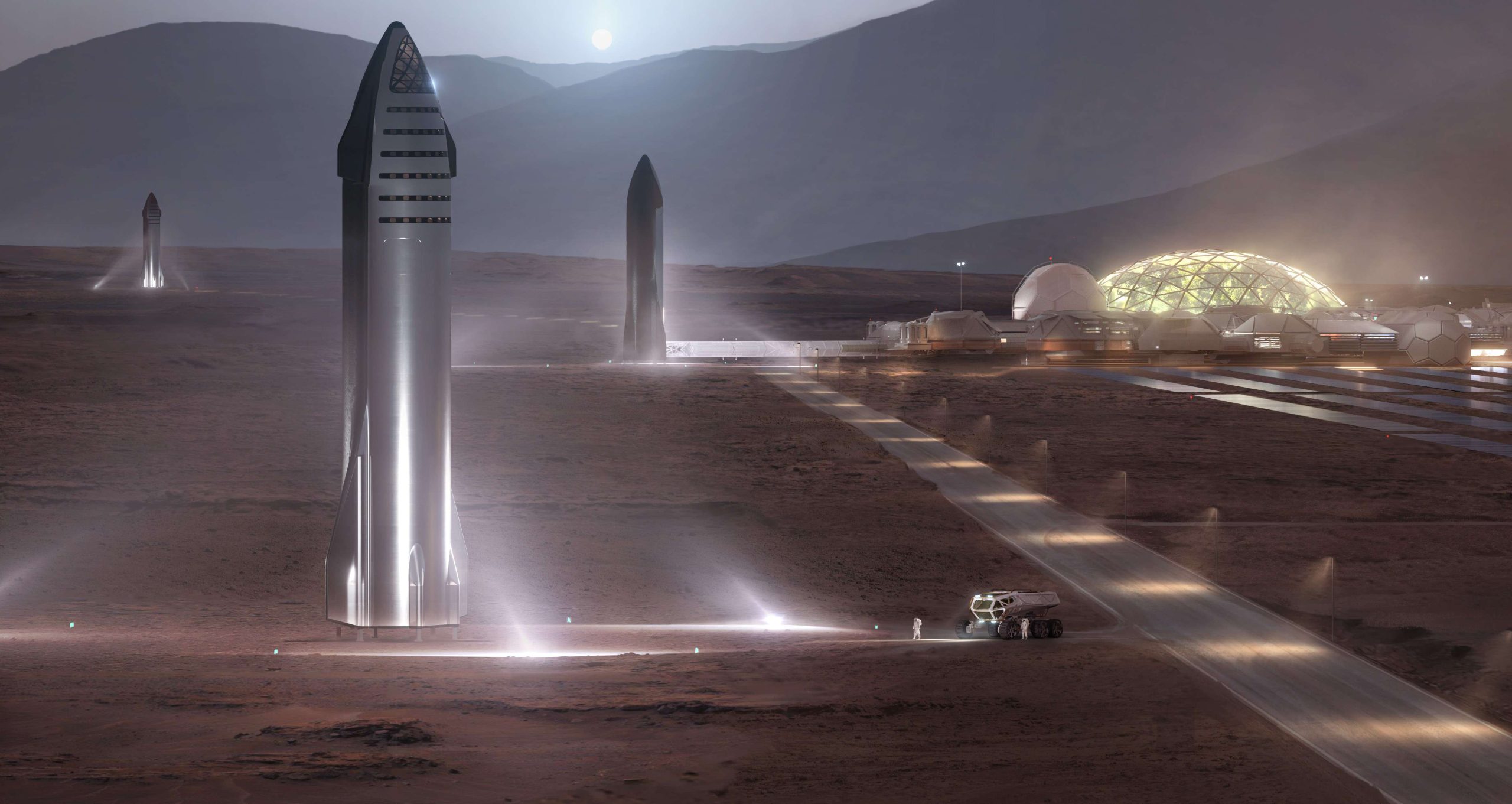
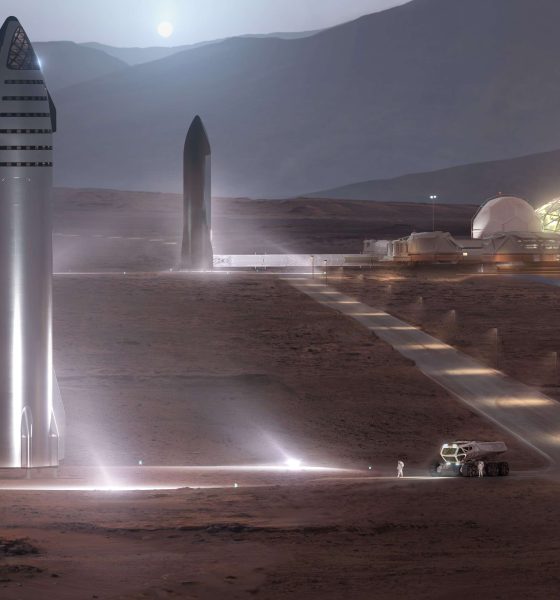
News
SpaceX details plan to build Mars Base Alpha with reusable Starship rockets
For the first time, SpaceX has teamed up with researchers from NASA and several other US institutions to publicly discuss how it plans to use Starship to build Mars Base Alpha.
Save for a handful of comments spread around the periphery of SpaceX and CEO Elon Musk’s main focus, Starship itself, the company and its executives have almost never specifically discussed how the next-generation fully-reusable rocket will be used to create a permanent human presence on Mars. For the most part, that clear focus on near-term hurdles is hard to fault. Half a century of mostly theoretical analysis has made it abundantly clear that a permanent and sustainable extraterrestrial human outpost is impossible without a radical reduction in the cost of access to space. For decades, NASA has studied and studied and studied slight variations of a plan that would cost hundreds of billions of dollars to send a few astronauts to Mars for a few months at a time.
Put simply, without a revolution in space transport, even a temporary presence on Mars where inhabitants are mostly dependent on imported goods is infeasible unless Mars exploration is made a national or international priority on the order of tens of billions of dollars per year. Over the 80-90 years that spaceflight has been seriously pondered, dozens of groups and papers and studies and space agencies have imagined what that revolution might look like and SpaceX is not unique for proposing a solution to that longstanding problem. However, SpaceX is the first of that long list of contenders to propose a solution and both invest significant resources and put hammer to metal in an attempt to make that vision real.

Two years after SpaceX announced its intention to build that next-generation space transportation system, Musk revealed a radical design change and work on the first steel Starship prototypes began. Three years later, SpaceX has completed nine Starship test flights – four brief hops and five flights above 10 km (6 mi). In 2021 alone, SpaceX completed four of those high-altitude flight tests, recovered a high-altitude prototype intact for the first time, built the first orbital-class ship and booster prototypes, began testing that ship, and is nearly finished the first orbital Starship launch site from scratch. In April, SpaceX also secured a $2.9 billion NASA contract to build a human-rated Moon lander variant of Starship.
Put simply, SpaceX – and now NASA with it – has laid a sturdy foundation upon which Starship will almost certainly be realized. A great deal of work remains but SpaceX has more or less surmounted most of the major technical hurdles that towered over Starship/BFR/ITS just a few years ago. A wealth of Starship ground and flight tests have firmly demonstrated that the rocket’s structures, avionics, Raptor engines, exotic methods of descent and landing, and previously unflown fuel of choice are all ready for orbital flight. From then on, SpaceX will still need to prove out Starship’s massive, ceramic, non-ablative heat shield technology; mature orbital rocket refueling techniques and technologies; and finally operationalize all the above to make the rapid launch, reuse, and refueling of the largest rocket in history routine and mundane – something SpaceX has proven to be more than capable of with Dragon and Falcon.
How, then, will SpaceX proceed to the Red Planet?
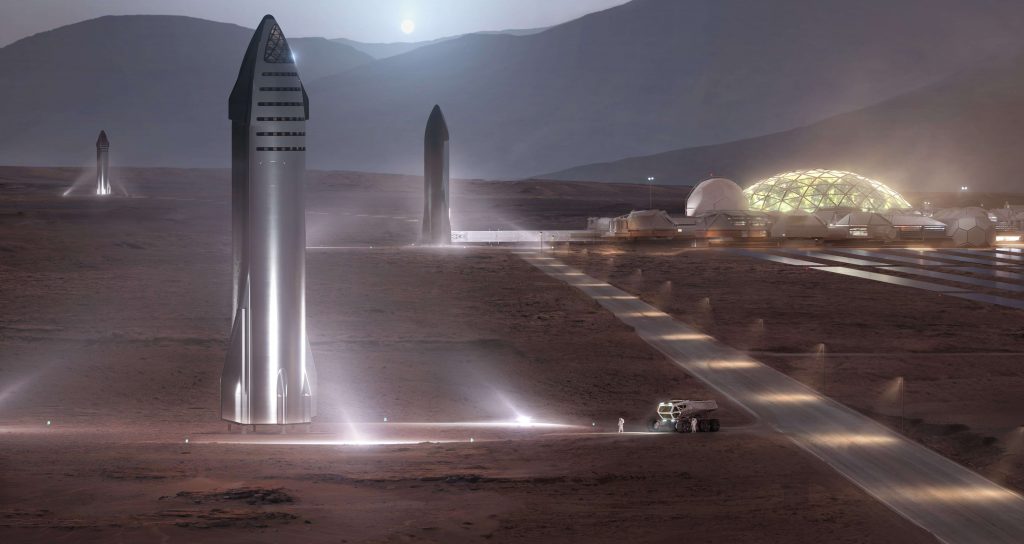
Packing for Mars
With the help of coauthors from NASA Ames, SETI, and half a dozen prestigious US universities and institutes, SpaceX has begun to answer exactly that question in a 2021 whitepaper [PDF] submitted for the National Academies’ next Planetary Science and Astrobiology Decadal Survey. While that survey alone could influence NASA as the agency prepares to outline its next decade of space science and determine the ultimate destination of tens of billions of federal dollars, the consequences of which could be immense, SpaceX also used the paper to describe its plans for early missions to Mars in unprecedented detail.
As has always been the plan, SpaceX will begin the process of constructing sustainable cities on Mars with a few (relatively) simple steps. Likely as soon as the mid-2020s, SpaceX will begin launching uncrewed Starships to Mars to both verify the system’s maturity and readiness and “deliver significant quantities of cargo to the surface in advance of human arrival.” Likely leaning on a wide range of robotics, those early missions will help SpaceX characterize local resources, stage supplies, test technologies for long-duration Martian surface ops, and begin developing infrastructure – with a propellant plant likely the most pressing need. None of that is surprising. However, there’s more.
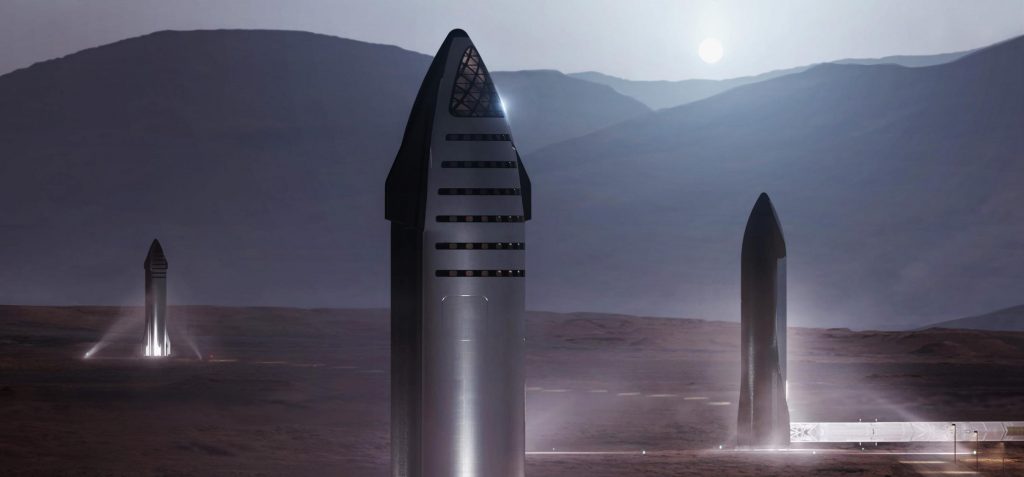
According to the authors, which include several current and former SpaceX engineers, “current SpaceX mission planning [tasks those early uncrewed Starships with delivering] equipment for increased power production, water extraction, LOX/methane production, pre-prepared landing pads, radiation shielding, dust control equipment, exterior shelters for humans and equipment, [and more – all hardware needed to support the first human base.]”
Further, confirming what’s been assumed to be the plan for years, “humans will likely live on [Starships] for the first few years until additional habitats are constructed” and “the first wave of uncrewed Starships can also be relocated and/or repurposed as needed to support the humans on the surface,” serving as “valuable assets for storage, habitation, [scientific laboratories], and a source of refined metal structures and resources.” The paper also states that “SpaceX is aggressively developing Starship to…conduct initial test flights to Mars…as soon as 2022 [or 2024]” and even raises the possibility of SpaceX launching the first Starship(s) to Mars before the rocket’s first lunar mission but then launching a separate lunar mission and landing a different Starship on the Moon while the Marsbound ship or ships are still in transit.
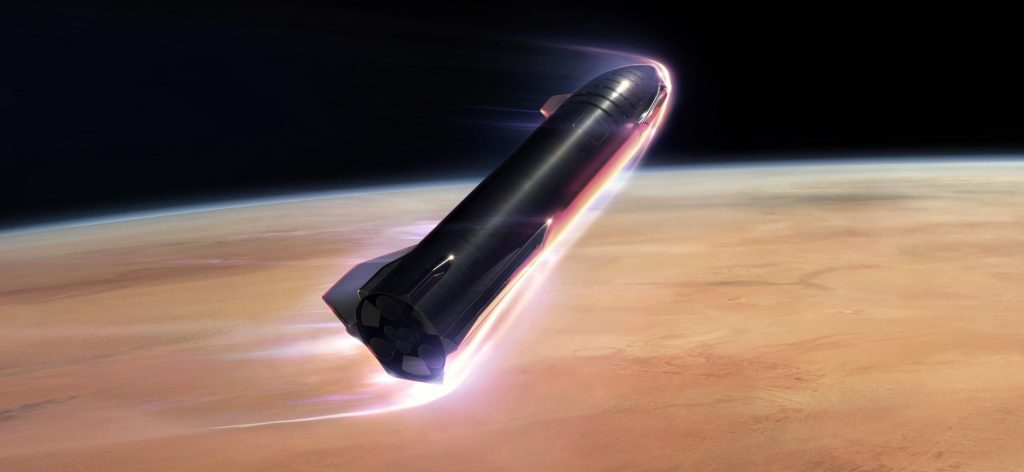
The whitepaper marks the first time that SpaceX (or those familiar with the company’s plans) has properly fleshed out the basics of its first crewed and uncrewed Starship missions to Mars and confirms a great deal of well-informed speculation. Namely, SpaceX appears to intend to pack even the very first Mars-bound ships with supplies. But even if they don’t bring much, the first Martian immigrants – launched in batches of “10-20 people” alongside “100+ metric tons” (~220,000+ lb) of cargo – will reuse all surviving Starships as pre-emplaced habitats, storage tanks, and raw material feedstock. Early cargo will focus on power, water, and propellant production, as well as shelters, radiation shielding, and the construction of prepared landing pads. Unsurprisngly, early residents will likely make the Starships that carry them to Mars their first homes on the surface of the Red Planet, taking advantage of an ~1100m³ (~39,000ft³) pressurized volume already outfitted to keep dozens of people alive and healthy in deep space for months at a time.

Elon Musk
Elon Musk and Tesla AI Director share insights after empty driver seat Robotaxi rides
The executives’ unoccupied tests hint at the rapid progress of Tesla’s unsupervised Robotaxi efforts.

Tesla CEO Elon Musk and AI Director Ashok Elluswamy celebrated Christmas Eve by sharing personal experiences with Robotaxi vehicles that had no safety monitor or occupant in the driver’s seat. Musk described the system’s “perfect driving” around Austin, while Elluswamy posted video from the back seat, calling it “an amazing experience.”
The executives’ unoccupied tests hint at the rapid progress of Tesla’s unsupervised Robotaxi efforts.
Elon and Ashok’s firsthand Robotaxi insights
Prior to Musk and the Tesla AI Director’s posts, sightings of unmanned Teslas navigating public roads were widely shared on social media. One such vehicle was spotted in Austin, Texas, which Elon Musk acknowleged by stating that “Testing is underway with no occupants in the car.”
Based on his Christmas Eve post, Musk seemed to have tested an unmanned Tesla himself. “A Tesla with no safety monitor in the car and me sitting in the passenger seat took me all around Austin on Sunday with perfect driving,” Musk wrote in his post.
Elluswamy responded with a 2-minute video showing himself in the rear of an unmanned Tesla. The video featured the vehicle’s empty front seats, as well as its smooth handling through real-world traffic. He captioned his video with the words, “It’s an amazing experience!”
Towards Unsupervised operations
During an xAI Hackathon earlier this month, Elon Musk mentioned that Tesla owed be removing Safety Monitors from its Robotaxis in Austin in just three weeks. “Unsupervised is pretty much solved at this point. So there will be Tesla Robotaxis operating in Austin with no one in them. Not even anyone in the passenger seat in about three weeks,” he said. Musk echoed similar estimates at the 2025 Annual Shareholder Meeting and the Q3 2025 earnings call.
Considering the insights that were posted Musk and Elluswamy, it does appear that Tesla is working hard towards operating its Robotaxis with no safety monitors. This is quite impressive considering that the service was launched just earlier this year.
Elon Musk
Starlink passes 9 million active customers just weeks after hitting 8 million
The milestone highlights the accelerating growth of Starlink, which has now been adding over 20,000 new users per day.

SpaceX’s Starlink satellite internet service has continued its rapid global expansion, surpassing 9 million active customers just weeks after crossing the 8 million mark.
The milestone highlights the accelerating growth of Starlink, which has now been adding over 20,000 new users per day.
9 million customers
In a post on X, SpaceX stated that Starlink now serves over 9 million active users across 155 countries, territories, and markets. The company reached 8 million customers in early November, meaning it added roughly 1 million subscribers in under seven weeks, or about 21,275 new users on average per day.
“Starlink is connecting more than 9M active customers with high-speed internet across 155 countries, territories, and many other markets,” Starlink wrote in a post on its official X account. SpaceX President Gwynne Shotwell also celebrated the milestone on X. “A huge thank you to all of our customers and congrats to the Starlink team for such an incredible product,” she wrote.
That growth rate reflects both rising demand for broadband in underserved regions and Starlink’s expanding satellite constellation, which now includes more than 9,000 low-Earth-orbit satellites designed to deliver high-speed, low-latency internet worldwide.
Starlink’s momentum
Starlink’s momentum has been building up. SpaceX reported 4.6 million Starlink customers in December 2024, followed by 7 million by August 2025, and 8 million customers in November. Independent data also suggests Starlink usage is rising sharply, with Cloudflare reporting that global web traffic from Starlink users more than doubled in 2025, as noted in an Insider report.
Starlink’s momentum is increasingly tied to SpaceX’s broader financial outlook. Elon Musk has said the satellite network is “by far” the company’s largest revenue driver, and reports suggest SpaceX may be positioning itself for an initial public offering as soon as next year, with valuations estimated as high as $1.5 trillion. Musk has also suggested in the past that Starlink could have its own IPO in the future.
News
NVIDIA Director of Robotics: Tesla FSD v14 is the first AI to pass the “Physical Turing Test”
After testing FSD v14, Fan stated that his experience with FSD felt magical at first, but it soon started to feel like a routine.

NVIDIA Director of Robotics Jim Fan has praised Tesla’s Full Self-Driving (Supervised) v14 as the first AI to pass what he described as a “Physical Turing Test.”
After testing FSD v14, Fan stated that his experience with FSD felt magical at first, but it soon started to feel like a routine. And just like smartphones today, removing it now would “actively hurt.”
Jim Fan’s hands-on FSD v14 impressions
Fan, a leading researcher in embodied AI who is currently solving Physical AI at NVIDIA and spearheading the company’s Project GR00T initiative, noted that he actually was late to the Tesla game. He was, however, one of the first to try out FSD v14.
“I was very late to own a Tesla but among the earliest to try out FSD v14. It’s perhaps the first time I experience an AI that passes the Physical Turing Test: after a long day at work, you press a button, lay back, and couldn’t tell if a neural net or a human drove you home,” Fan wrote in a post on X.
Fan added: “Despite knowing exactly how robot learning works, I still find it magical watching the steering wheel turn by itself. First it feels surreal, next it becomes routine. Then, like the smartphone, taking it away actively hurts. This is how humanity gets rewired and glued to god-like technologies.”
The Physical Turing Test
The original Turing Test was conceived by Alan Turing in 1950, and it was aimed at determining if a machine could exhibit behavior that is equivalent to or indistinguishable from a human. By focusing on text-based conversations, the original Turing Test set a high bar for natural language processing and machine learning.
This test has been passed by today’s large language models. However, the capability to converse in a humanlike manner is a completely different challenge from performing real-world problem-solving or physical interactions. Thus, Fan introduced the Physical Turing Test, which challenges AI systems to demonstrate intelligence through physical actions.
Based on Fan’s comments, Tesla has demonstrated these intelligent physical actions with FSD v14. Elon Musk agreed with the NVIDIA executive, stating in a post on X that with FSD v14, “you can sense the sentience maturing.” Musk also praised Tesla AI, calling it the best “real-world AI” today.








